Note
hi! wow it’s been so long!!! someone sent me this ask on my main blog and it got me thinking about how much i love starfleet and how much i love all of you and how bad i feel for disappearing. i want to come back! i just don’t know if anyone would still be interested. please let me know if this is something you still would want to participate in!!!!! if that’s the case with enough people i’d definitely start up again!
thanks for listening i’m really sorry i’ve been so negligent :(
sebastiaens(.)tumblr(.)com/post/90484027307/oh-boy-what-is-this-okay-heres-the LMAOOOOOO ok is this ever coming back or is it dead?
i’M SO LATE ANSWERING THIS I APOLOGIZE !!!
the thing about this is it’s very complicated for a few reasons but let me preface those reasons with the Main Point which is ….. i want it to still be a thing bc …. i love it
anyway
1) i “”””””””started””””””””” starfleet when i was a semi-busy junior in high school and now i’m a Very Busy sophomore in college. and my fear is that if i didn’t have enough time then to keep it thriving, then i sure as Heck won’t have time now.
2) i did run the blog with other admins but i’ve pretty much lost contact with everyone and i feel like it’s a little unfair to seek them out now and ask them to come back
3) the blog is connected to my main blog (this one) and it got hard to keep all the content separate
but …. here’s what i’m thinking of doing:
deleting and then remaking the blog. just so i could start it fresh, and separately from my main account.
taking on new admins
actually ….. really Trying to make something of it bc i really love the idea
thanks for asking my Friend i’m sorry i took so long to answer!!!
6 notes
·
View notes
Photo
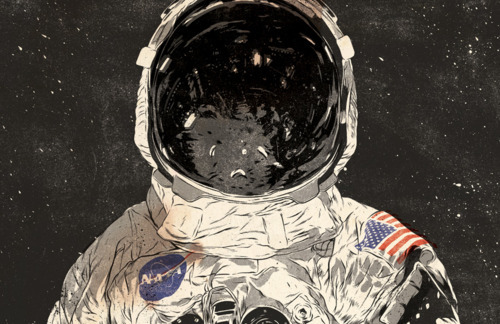
Get ready for hard times for NASA and space science. Currently expected to end in the year 2020 are the following NASA missions:
MESSENGER at Mercury
Lunar Reconnaissance Orbiter at the Moon
Mars Odyssey
Mars Curiosity Rover
MAVEN (which arrived at Mars only last month)
Mars InSight
Juno at Jupiter
Cassini at Saturn and Titan
Dawn studying dwarf planets in the asteroid belt
Possibly New Horizons which will arrive at Pluto next year
The problem is that many of these missions were started in the 90’s and after that the U.S. government’s been coasting on them without providing NASA with the funding to create and plan for new missions.
This will be the first time since the 1950’s that not only America, but Earth, isn’t currently exploring from Jupiter and beyond to Saturn and Pluto.
We’re also set to withdraw from Mercury, the asteroid belt and all but totally from Mars. We will in effect, no longer be exploring space.
The problem? NASA has only been receiving enough money to continue current missions. Congress and the White House have been, year after year, cutting their budget, meaning that as is the case starting this year…
NASA must cannibalize missions to preserve the most critical ones. To pay for the Curiosity Rover, they may have to, for example, withdraw from Jupiter.
At the Planetary Society we’ve been fighting tooth and nail to raise NASA’s funding. If you’re interested in helping all you need to do is sign our petition. It helps particularly now as politicians are more inclined to listen before elections.
If you’ve ever been inspired by pictures of Saturn’s rings, of the alien (and potentially inhabited) moon Titan, or the cream-colored bands of Jupiter, sign our petition. You’re name has the power to make a difference here.
Here’s the petition.
904 notes
·
View notes
Photo

Here are a couple of the less well-known pieces of astrophotography.
These two images were originally sent back to Earth from the Soviet Venera program probes (I believe these specific two came from Venera 13, though I don’t have the citation to hand).
That’s right - that barren rocky wasteland is Venus.
These images are particularly notable because Venus has a surface temperature of over 460 Celsius and a pressure of around 90 bars. That atmosphere is also pure poison. The clouds you can see aren’t water vapour; they’re composed of droplets of sulphuric acid. The ‘air’ itself is 94% carbon dioxide, with most of the rest being nitrogen and a lot of weird nasties.
None of the Venera landers remained operational for more than a couple of hours once on Venus’s surface. But frankly, given how unbelievably hostile the surface conditions are there, it’s a miracle they were able to function at all.
32K notes
·
View notes
Photo

Tiny Volcanic Moon Controls Jupiter’s Auroras
Jupiter has a permanent ring of auroral light surrounding each of its poles. Most of the charged particles responsible for the light have long been thought to originate from tiny, hyperactive Io, which burps out about a tonne of sulphur per second in its persistent, violent volcanic activity. However, the sun was thought to cause any variations in the rings via changes in the pressure of the solar wind.
But new observations suggest that Io can control these changes as well. “Variations we thought were connected to the sun we now see are connected to the volcanic activity,” says Bertrand Bonfond of the University of Liège in Belgium.
Read More
2K notes
·
View notes
Photo
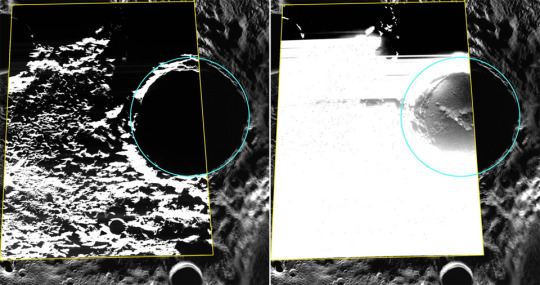
NASA’s Messenger captures first photos of ice on Mercury
304 notes
·
View notes
Photo
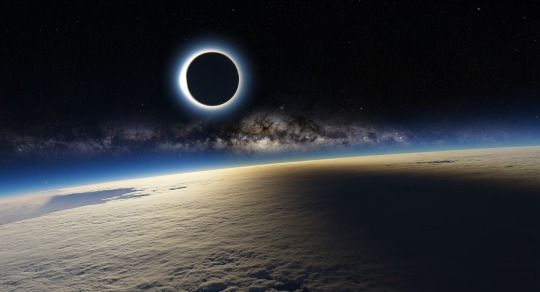
Solar Eclipse and Milky Way seen from ISS (International Space Station)
258K notes
·
View notes
Photo


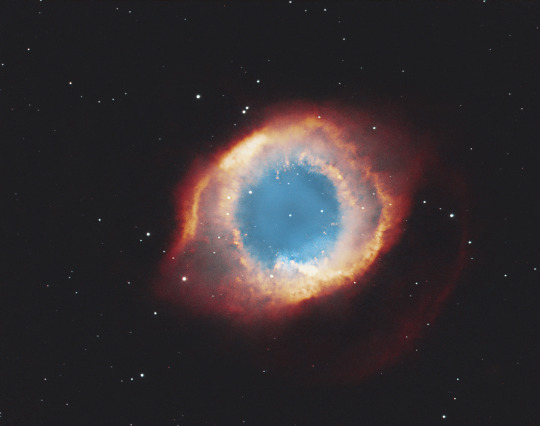
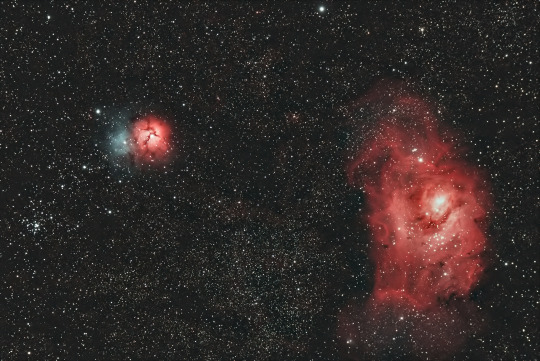
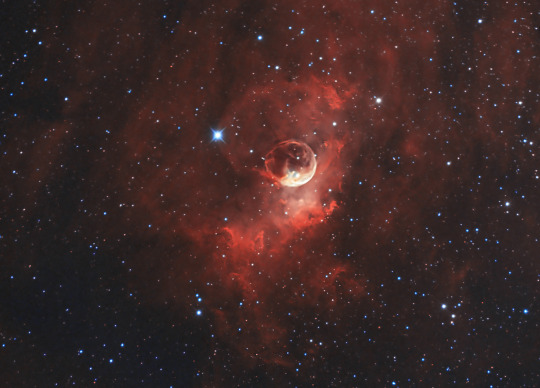

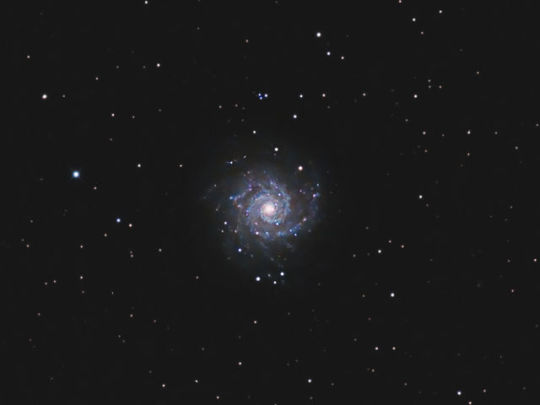


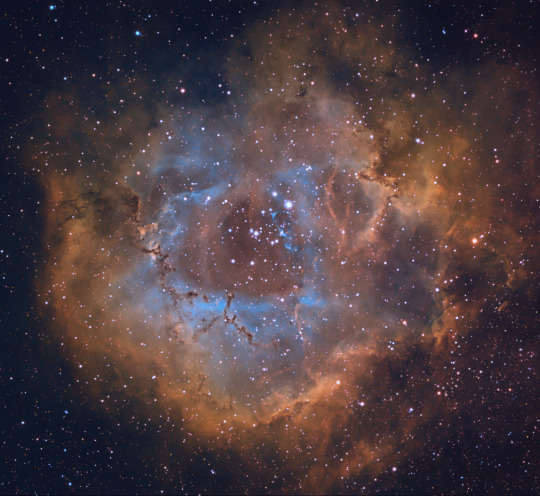
Magic Bubble nebula by Steven Coates
www.CoatesAstrophotography.com
Please don’t delete the link to the photographers/artists, thanks!
12K notes
·
View notes
Photo

Hubble Helps Astronomers Find Smallest Known Galaxy With Supermassive Black Hole
Astronomers using the NASA/ESA Hubble Space Telescope have found a monster lurking in a very unlikely place.
New observations of the ultracompact dwarf galaxy M60-UCD1 have revealed a supermassive black hole at its heart, making this tiny galaxy the smallest ever found to host a supermassive black hole.
This suggests that there may be many more supermassive black holes that we have missed, and tells us more about the formation of these incredibly dense galaxies. The results will be published in the journal Nature on 18 September 2014.
Lying about 50 million light-years away, M60-UCD1 is a tiny galaxy with a diameter of 300 light-years — just 1/500th of the diameter of the Milky Way. Despite its size it is pretty crowded, containing some 140 million stars. While this is characteristic of an ultracompact dwarf galaxy (UCD) like M60-UCD1, this particular UCD happens to be the densest ever seen.
Despite their huge numbers of stars, UCDs always seem to be heavier than they should be. Now, an international team of astronomers has made a new discovery that may explain why — at the heart of M60-UCD1 lurks a supermassive black hole with the mass of 20 million Suns.
"We’ve known for some time that many UCDs are a bit overweight. They just appear to be too heavy for the luminosity of their stars," says co-author Steffen Mieske of the European Southern Observatory in Chile. "We had already published a study that suggested this additional weight could come from the presence of supermassive black holes, but it was only a theory. Now, by studying the movement of the stars within M60-UCD1, we have detected the effects of such a black hole at its centre. This is a very exciting result and we want to know how many more UCDs may harbour such extremely massive objects."
The supermassive black hole at the centre of M60-UCD1 makes up a huge 15 percent of the galaxy’s total mass, and weighs five times that of the black hole at the centre of the Milky Way. “That is pretty amazing, given that the Milky Way is 500 times larger and more than 1000 times heavier than M60-UCD1,” explains Anil Seth of the University of Utah, USA, lead author of the international study. “In fact, even though the black hole at the centre of our Milky Way galaxy has the mass of 4 million Suns it is still less than 0.01 percent of the Milky Way’s total mass, which makes you realise how significant M60-UCD1’s black hole really is.”
2K notes
·
View notes
Video
vimeo
How many films do you recognize in munkicloud's tribute to space exploration in cinema?
56 notes
·
View notes
Note
I just wanted to notify you on two neat posts about the satellite India just managed to send into orbit around Mars. fuckyeahsouthasia(.)tumblr(.)com/post/98293374223/india-creates-history-as-isros-first-mars-orbiter and deputychairman(.)tumblr(.)com/post/98297260878/on-a-wanting-to-be-captain-kirk-level-look-india. You can find more by googling Mangalyaan which is the name of the satellite.
oh yeah! I heard about this in astronomy class the other day, thanks for sharing :D
6 notes
·
View notes
Photo
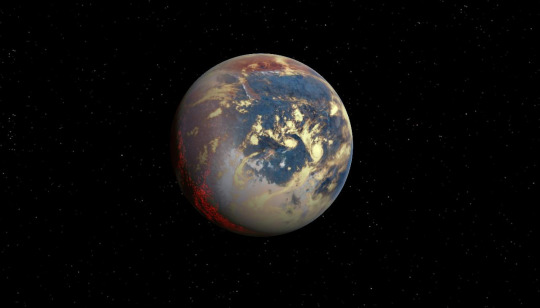

Clouds Detected on Alien Planet —New Hubble Discovery | TheDailyGalaxy
Weather forecasters on exoplanet GJ 1214b would have an easy job. Today’s forecast: cloudy. Tomorrow: overcast. Extended outlook: more clouds. A team of scientists led by researchers in the Department of Astronomy and Astrophysics at the University of Chicago report they have definitively characterized the atmosphere of a super-Earth class planet orbiting another star for the first time.
[Read more]
Source photo 1: [Tyrogthekreeper]
13K notes
·
View notes
Photo
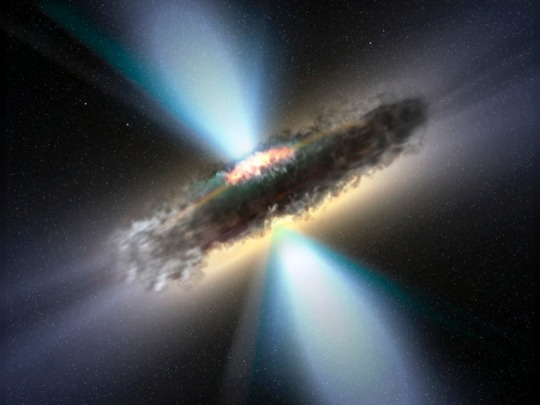
Monster black hole found in tiny galaxy
Discovery hints at twice as many supermassive black holes in the nearby Universe as previously thought.
Astronomers have for the first time found strong evidence for a giant black hole in a Lilliputian galaxy. The finding suggests that supermassive black holes could be twice as numerous in the nearby Universe as previously estimated, with many of them hidden at the centres of small, seemingly nondescript galaxies known as ultra-compact dwarfs.
Continue Reading
352 notes
·
View notes
Video
youtube
SOHO cameras affected by a solar flare
87 notes
·
View notes
Photo
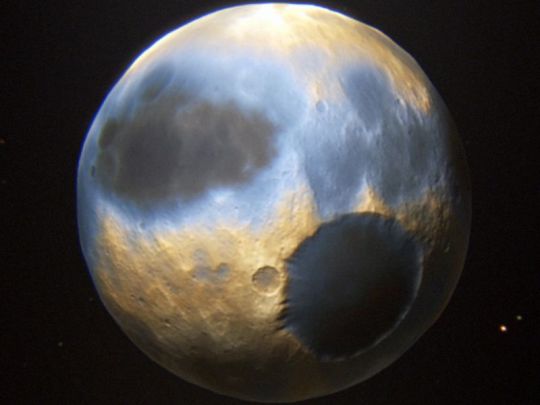
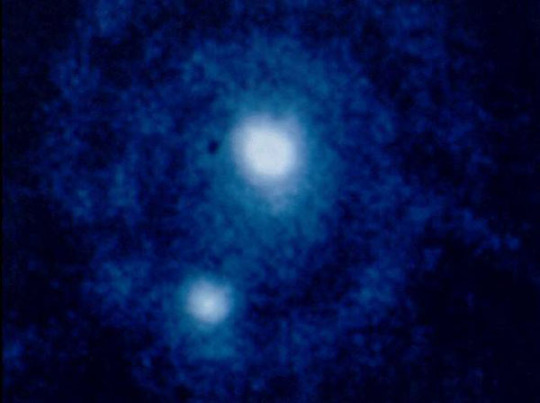
"Pluto and the Other Dwarf Planets Could Have Astrobiological Potential"
"It’s very exciting to think that the dwarf planets could have astrobiological potential," says New Horizons lead scientist Alan Stern of the Southwest Research Institute. In 2011, the highly sensitive Cosmic Origins Spectrograph aboard the Hubble Space Telescope discovered a strong ultraviolet-wavelength absorber on Pluto’s surface, providing new evidence that points to the possibility of complex hydrocarbon and/or nitrile molecules lying on the surface, according to researchers from Southwest Research Institute and Nebraska Wesleyan University. These chemical species can be produced by the interaction of sunlight or cosmic rays with Pluto’s known surface ices, including methane, carbon monoxide and nitrogen.
"This is an exciting finding because complex Plutonian hydrocarbons and other molecules that could be responsible for the ultraviolet spectral features we found with Hubble may, among other things, be responsible for giving Pluto its ruddy color," said Stern.
The team also discovered evidence of changes in Pluto’s ultraviolet spectrum compared to Hubble measurements from the 1990s. The changes may be related to differing terrains seen now versus in the 1990s, or to other effects, such as changes in the surface related to a steep increase in the pressure of Pluto’s atmosphere during that same time span.
"The discovery we made with Hubble reminds us that even more exciting discoveries about Pluto’s composition and surface evolution are likely to be in store when NASA’s New Horizons spacecraft arrives at Pluto in 2015," Stern added.
More…
29 notes
·
View notes
Link
At a recent event held at NASA headquarters, a panel of scientists discussed how our knowledge of ancient Earth can help guide our search for life elsewhere. The panel included Pheobe Cohen of Williams College and Dawn Sumner of UC Davis.
10 notes
·
View notes
Photo

Titan, Saturn’s largest moon, is perhaps visually the most Earth-like body in our solar system. Unlike Mars, Titan holds a dense atmosphere, has an organic-rich chemistry, and even has mountains, rivers, rain, and large surface lakes. The difference between Titan and Earth is that Titan’s rivers, lakes, rain, and atmosphere are all based on extremely cold methane. This raises an interesting question of whether methane, or any other liquid, is capable of substituting for water as a substrate for life. In the future, the Cassini mission will search for seasonal changes in Titan’s atmosphere, and could one day confirm the presence of an underground liquid ocean.
via SFU - Simon Fraser University
19 notes
·
View notes
Photo
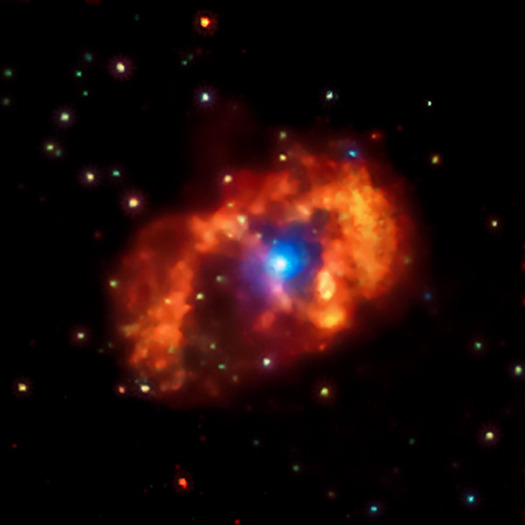
Eta Carinae: Our Neighboring Superstars
Eta Carinae is an intriguing double star system that contains one of the biggest and brightest stars in the Milky Way.
X-rays from Eta Carinae give clues about the system, including how the winds from the stars interact.
Astronomers have been observing Eta Carinae with Chandra since the telescope was launched in 1999.
The Eta Carinae star system does not lack for superlatives. Not only does it contain one of the biggest and brightest stars in our galaxy, weighing at least 90 times the mass of the Sun, it is also extremely volatile and is expected to have at least onesupernova explosion in the future.
As one of the first objects observed by NASA’s Chandra X-ray Observatory after its launch some 15 years ago, this double star system continues to reveal new clues about its nature through the X-rays it generates.
Continue Reading
67 notes
·
View notes